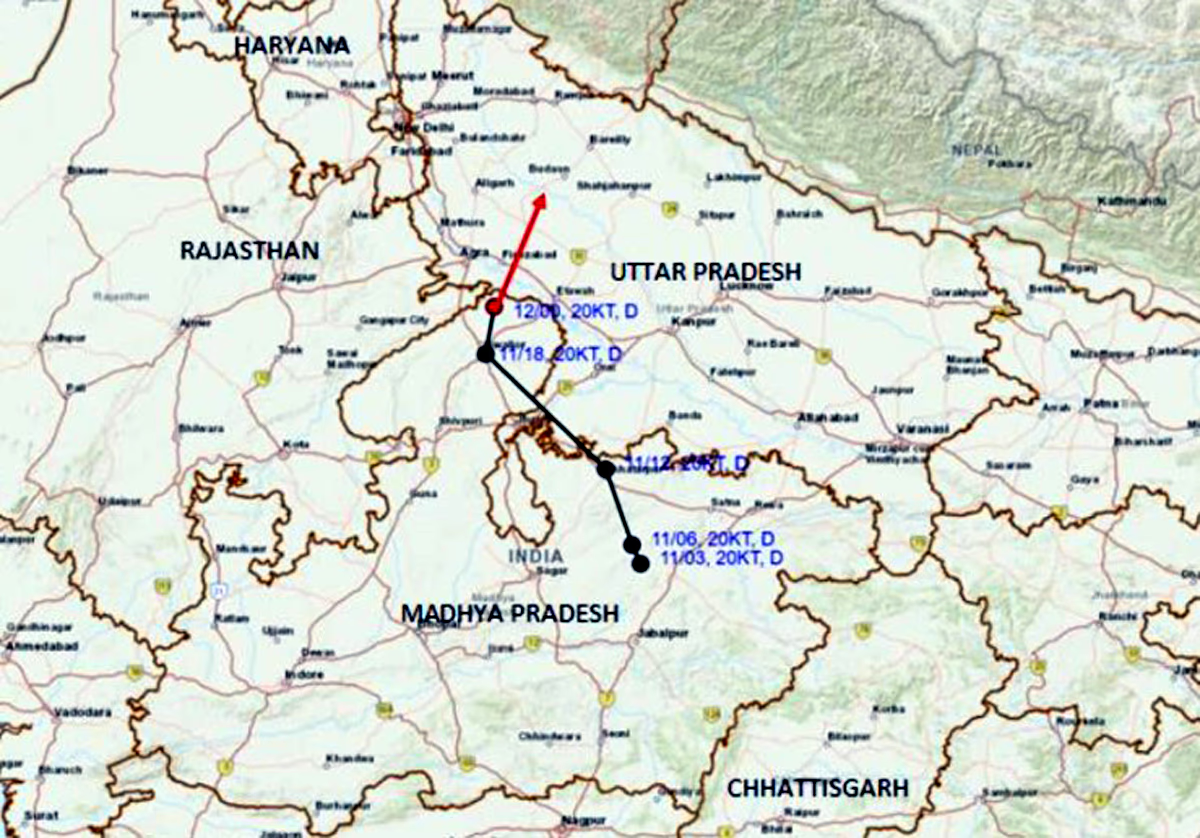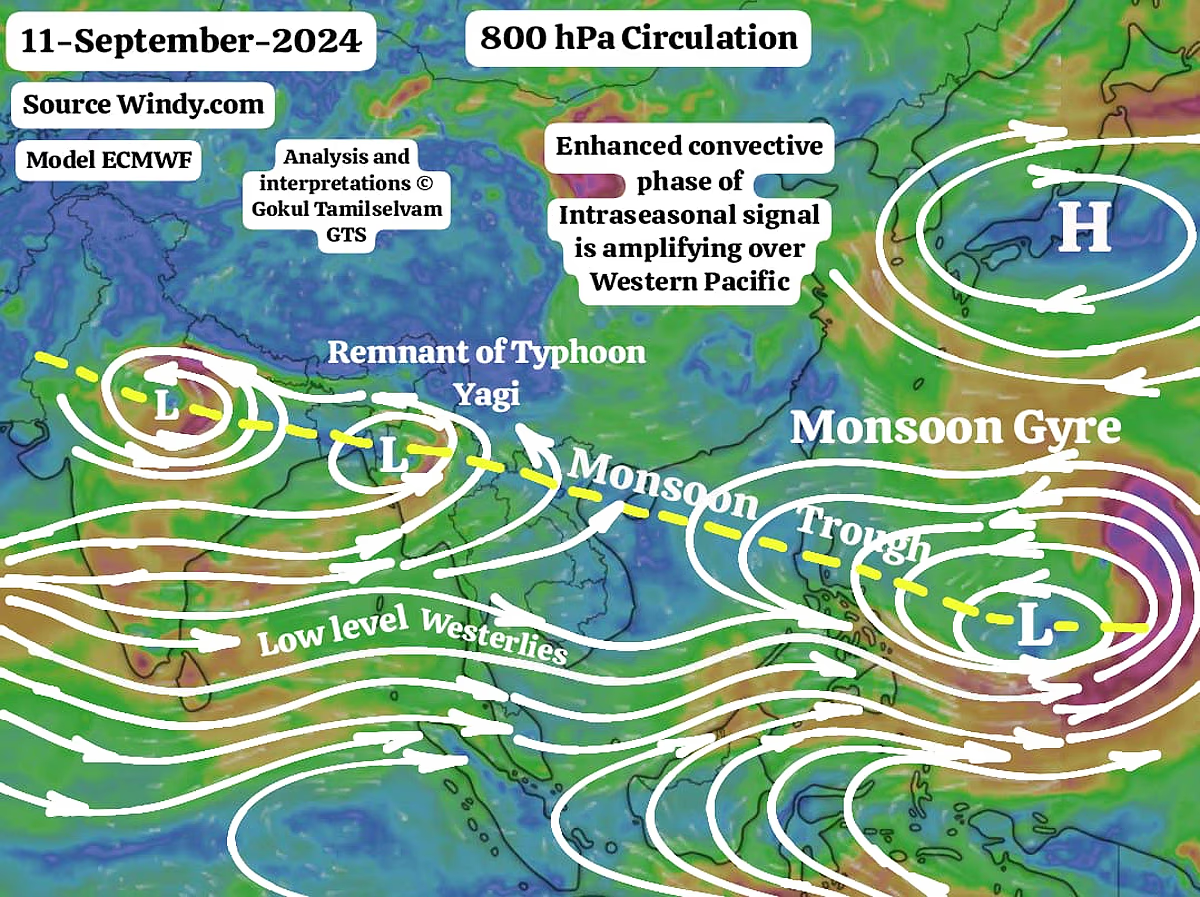The Indian Meteorological Department (IMD) has issued a yellow alert for Delhi-NCR. When people in this area woke up on Thursday morning, it was raining. More rain and strong winds are forecasted for the next two days. This situation isn't exclusive to Delhi-NCR; other states like Haryana, Western Uttar Pradesh, Uttarakhand, and parts of Northern Madhya Pradesh might experience heavy rain from September 11 to 14.
Additionally, Eastern Uttar Pradesh, Eastern Rajasthan, parts of Chandigarh, Western Rajasthan, and Punjab might also see rainfall during this period. Usually, the monsoon starts to retreat by September 15, but this time it seems to be extending its stay until the end of the first week of October.
Also Read: Global Flood Zones - Is Flooding Exclusive to India? Countries like China and Vietnam Face Major Disasters Every Year
How Did Typhoon Yagi Come to Our Country? Watch the Video Below
What’s the Deal with Typhoon Yagi and the Bay of Bengal?
Currently, there is a depression over Northwest Madhya Pradesh, adjacent to Southwest Uttar Pradesh. Initially, this depression was not present here; it formed in the Bay of Bengal. This depression supported Typhoon Yagi, which was located near Vietnam, pulling it towards India.
Behold the beauty of the tropical cyclone formed in this depression, mimicking the cyclone's structure. Thanks to low vertical wind shear, it developed well. As it enters the westerlies' wind shear, the maximum rainfall will shift to its northern or northeast sector in 2 days.
Now, it has merged with this depression. Moving at a speed of 8 km/hr northwest, it significantly impacts areas like Gwalior, Agra, Jhansi, and Aligarh. It is expected to gradually move north-northeast in the next 24 hours. Doppler radars in Delhi and Lucknow are monitoring this weather system.
Also Read: Has India's Flood Map Changed? Earlier Bihar and UP Witnessed Devastation, Now These States Face 'Water Fury'

Source: aajtak
Adding to the trouble is the monsoon trough, which is still active and will persist for the next 3-4 days. This has led to a cyclonic circulation over Southern Gujarat. Consequently, some areas in the states mentioned are likely to experience rainfall in the next 2-3 days.
Will More Such Storms Occur...
This season is characterized by global tropical intraseasonal circulation, with several monsoon bands over the Western Pacific Ocean. As a result, new depression systems form, mostly outside the Philippines. These are known as monsoon gyres, which can develop into tropical cyclones or storms within a week, prolonging the Indian monsoon and preventing its retreat.
Also Read: Flash Flood and Landslide Warning: Heavy Rain Alert Issued for MP and Uttarakhand by Weather Dept.

Source: aajtak
Weather Predictions Becoming Unpredictable
A new report studies all extreme disasters from 1973 to 2023. It is surprising that floods in Delhi, Gujarat, Telangana, and Rajasthan, landslides in Wayanad, and searing heatwaves cannot be accurately predicted by scientists and experts as their intensity and frequency have suddenly increased. Most districts in Assam, Bihar, Odisha, Andhra Pradesh, and Telangana are vulnerable to extreme floods at any time.
Lead scientist Abinash Mohanty, who conducted this study, states that the heat is flowing from the land to the sea, as witnessed in Gujarat, Andhra Pradesh, and Telangana recently. This increases sea temperatures, impacting the weather. For example, coastal areas like Srikakulam and Cuttack in South India, and West Champaran in Bihar, previously known for floods, now face droughts. This occurrence is especially prominent in the plains.
Also Read: Disaster in Nepal... Catastrophe from Everest Hits the Village of Tenzing Norgay, the First Everest Conqueror
Weather Changes are Evident with Clear Signs
The impact of changing weather is visible with landslides in Wayanad, post-heavy rain floods in Gujarat, vanishing snow from Uttarakhand's Om Parvat, and sudden shifts causing water to accumulate in cities. Looking at this year's monsoon, it started weak in June but intensified extraordinarily by September. Surprisingly, despite usually seeing a temperature drop during monsoons, this time the heat persisted, increasing dry spell days in eastern states.
Former meteorologist Anand Sharma states that climate change and rising temperatures are the core reasons for such weather changes. Thus, it is imperative to curb these changes to prevent extreme weather events which can occur anytime, anywhere, and can be extremely severe.




